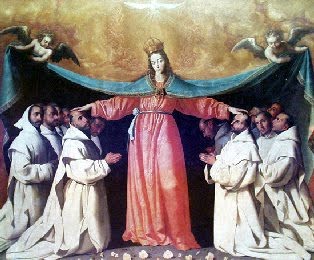 This brief reflection is from a fifteenth-century Carthusian monk named, Dom Nicholas Kempf. This piece is from his work titled, ‘De Ostensione Regni Dei’. In the original is the usage of a fancy Latin word, ‘anagogicum’ which translates just as high-brow in English: ‘anagogical’. Anagogical or ‘anagogy’ is a spiritual or mystical meaning/interpretation that is hidden in Sacred Scripture. Nicholas Kempf also makes use of the Latin word, ‘mens’ which literally means mind or intellect. Today ‘mens’ is sometimes translated as ‘spirit’ although that is not completely true. Interestingly, though, medieval writers used ‘mens’ to indicate the most exalted or highest part of the human soul. Blessed John Henry Newman felt that the mystical interpretation was the most important interpretation and today perhaps that interpretation is the least evident. One might say today that prophetically Blessed Newman wrote: ‘It may almost be laid down as an historical fact that the mystical interpretation and orthodoxy will stand or fall together’. Here is the reflection of Dom Nicholas Kempf:
This brief reflection is from a fifteenth-century Carthusian monk named, Dom Nicholas Kempf. This piece is from his work titled, ‘De Ostensione Regni Dei’. In the original is the usage of a fancy Latin word, ‘anagogicum’ which translates just as high-brow in English: ‘anagogical’. Anagogical or ‘anagogy’ is a spiritual or mystical meaning/interpretation that is hidden in Sacred Scripture. Nicholas Kempf also makes use of the Latin word, ‘mens’ which literally means mind or intellect. Today ‘mens’ is sometimes translated as ‘spirit’ although that is not completely true. Interestingly, though, medieval writers used ‘mens’ to indicate the most exalted or highest part of the human soul. Blessed John Henry Newman felt that the mystical interpretation was the most important interpretation and today perhaps that interpretation is the least evident. One might say today that prophetically Blessed Newman wrote: ‘It may almost be laid down as an historical fact that the mystical interpretation and orthodoxy will stand or fall together’. Here is the reflection of Dom Nicholas Kempf:The eye of the mens is illuminated with light to understand the anagogical meaning in Sacred Scripture when the mens reaches upward toward God through an affected, sighing, and longing love. This anagogical meaning lies hidden everywhere in the Scriptures, and it cannot be effectively revealed except to a mens that is cleansed and pure.
This true anagogical meaning converts the gathered flowers into the sweetness of honey, just as the bees are accustomed to do. The blossoms of the Scriptures are gathered by the other meanings of Scripture, but it is through the anagogical meaning that the sweetness of honey is tasted through the affectedness of love.
So too the bees gather flowers and from them are well able to draw out and concentrate nourishment. So too should all Scripture be read in order that the honey of love might be gathered into the wax of Christ’s divinity and humanity – but not only Scripture, for indeed one should look at each creature in order to obtain not merely knowledge of God but also love of God. For every creature is like a picture or letter or trace that point to the Creator.
Thus the apostle says, ‘the invisible things of God are understood through the things that are made; His eternal power and divinity are clearly seen’ (Romans 1:20).











